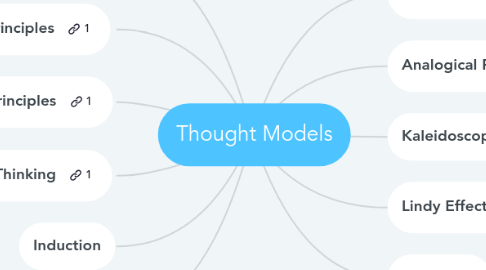
1. Second-Order Effects
1.1. Popularizer
1.1.1. Howard Marks
1.2. About
1.3. Quote
2. First Principles
2.1. Popularizer
2.1.1. Elon Musk
2.2. Case Studies
2.2.1. Sherlock Holmes
3. Zeroth Principles
3.1. Popularizer
3.1.1. Bryan Johnson
3.2. Case Studies
3.2.1. Dirk Gently
3.2.2. Andrej Karpathy’s Software 2.0 vision is zeroth-order software engineering that uses “abstract, human unfriendly language” to achieve an objective via a deep neural network (DNN). This in contrast to Software 1.0 where a human writes explicit code to achieve an objective. Perhaps Karpathy’s paradigm could be labeled Software 0.0?
3.2.3. Daniel Dennett’s concept of “Joosting” (Jumping Out of The System) aims at discovering Zeros.
3.2.4. Einstein uncovered a Zero when he hypothesized that the speed of light might be constant for all observers, which uncovered a new conceptual primitive. Literally a “move from another dimension”.
4. Combinatorial Thinking
4.1. Popularizer
4.1.1. Maria Popova
5. Induction
6. Sequence
6.1. Loop
7. Scenario Planning
7.1. Popularizer
7.1.1. Peter Schwartz
7.2. Sub Models
7.2.1. Expected Value
8. Analogical Reasoning
9. Kaleidoscopic Thinking
9.1. Sub Models
9.1.1. Multi-Defining
9.1.2. Physical, Emotional, Conceptual
9.1.3. Past, Present, Future
9.1.4. Inner & Outer Game
9.2. Popularizer
9.2.1. Eben Pagan
10. Lindy Effect
10.1. Popularizer
10.1.1. Nassim Taleb
